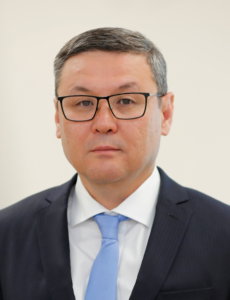Kazakhstan’s initiative to convene the Conference on Confidence-Building Measures in Asia (CICA) is now thirty years old. The idea of convening the Conference on Interaction and Confidence-Building Measures in Asia (CICA), announced from the rostrum of the 47th session of the UN General Assembly on October 5, 1992, initiated the formation of a new format of cooperation in the Asian region.
The need to convene the forum was dictated by the change in the balance of power after the collapse of the bipolar system, the emergence of new countries and a political subregion – Central Asia, and the change in the regional security architecture due to the integration of new states into a common and indivisible security space.
The essence of the initiative was to create an effective mechanism of preventive diplomacy, peaceful settlement of disputes and cooperation in strengthening regional security and stability.
Since then, the geopolitical situation in the world and military-strategic security in Asia has changed several times. At present, the next presidency of the Republic of Kazakhstan has coincided with a new geopolitical reformatting of the world system.
This reformatting is associated with profound processes in the sphere of security, including Asian security. The planetary pandemic caused by the spread of COVID-19 was a kind of marker of the changes and their catalyst.
Since the launch of the CICA process, the member states of the Forum have done an enormous amount of work in defining and shaping the framework for its activities. CICA brought together 27 states with a population of more than half of our planet, occupying more than 90% of the Asian continent.
The central processes taking place in Asia (and wider Eurasia) are the growing competition between the United States and China, as well as the prospects for the implementation of the grandiose geopolitical and geo-economic project “One, One Way” (OTOH) initiated by China. In the past period, the situation in such regions as the Middle East, South Asia, Asia Pacific, Southeast Asia and Northeast Asia has changed significantly; the security strategies of many Asian and Eurasian states: Japan, China, India, Russia, Turkey, etc. have also undergone changes.
Under these contradictory conditions, the role and place of CICA are changing radically. The evolution of this organization in the direction of strengthening interaction and confidence-building measures should again be undertaken by Kazakhstan. The prevailing circumstances require revision of the CICA agenda and the search for new tools of security.
Geographically and geopolitically, Central Asia occupies a pivotal position in the implementation of almost all major continental projects of strategic, transport and economic nature. That is, the future fate of CICA will depend on the will, efforts and influence of major and medium-sized players and international organizations – Russia, the PRC, India, Iran, Turkey, Kazakhstan, etc.
CICA already has the status, role, functions, working methods, structure, and other features of a full-fledged international organization:
1) General principles of member states reflected in the Declaration of Principles Governing Relations among CICA Member States of 1999, and common goals and aspirations of member states enshrined in the Almaty Act of 2002.
2) Statutory documents of CICA – the Almaty Act of 2002, which provided CICA with the necessary structure and institutions for its effective functioning, and the Declaration of Principles of 1999, which is an integral part of the Almaty Act, as well as the statutory document of the Secretariat – the Secretariat Agreement of 2006.
3) Adherence of CICA to the purposes and principles of the UN Charter and recognition that the international legal basis of CICA activities is the UN Charter and international law, which is reflected in the CICA charter documents.
4) The permanent structure of governing bodies – the Summit, Ministerial Meeting and the Committee of Senior Officials (CSO), and working bodies – the Ad Hoc Working Group and Meetings of Experts;
5) An inclusive – consensus – decision-making mechanism; regular meetings of the governing bodies adopting documents reflecting the unified position of member states and their working methods as set out in the Rules of Procedure;
6) A clearly defined and permanent area of responsibility, i.e. mandate – implementation of the confidence-building measures reflected in the Catalogue of confidence-building measures and the Cooperative Approach, which includes a list of specific areas of work in five dimensions, covering all aspects of cooperation in the CICA framework.
7) Established methods of implementing the trust measures, including the institute of coordination and co-facilitatorship, meetings of experts, development of concepts and action plans, carrying out specific events, exchange of information, and many other forms of work. The volume and quality of CICA activities within the framework of the implementation of confidence-building measures testify to the demand for and usefulness of the forum as a mechanism of implementation of practical activities.
8) Function of Chairmanship – coordination of current activities of the Forum by one of the member-states, including holding CICA meetings, preparation of their decisions, external representation of the CICA and other functions;
9) Standing Executive Body – the Secretariat, performing the tasks determined by the Member States, including provision of administrative, organizational, technical and informational support of all the Forum activities, including CICA meetings, implementation of trust measures, external relations, assistance to the Chairmanship and other functions;
10) Chief Executive Officer – Executive Director of the Secretariat in charge of Secretariat activities, administrative, financial and personnel management and external cooperation.
11) Convention on Privileges and Immunities of the Secretariat, its Staff and Representatives of CICA Member States, granting the same legal status as in full-fledged international organizations.
12) Financial resources allocated by the Member States and their budgetary management mechanisms, including the Financial Rules and Regulations, annual budget, financial reporting and external audit mechanism.
13) Permanent staffing and human resource management mechanisms, including Staff Regulations, staffing table and categorization of posts, mechanism for segregation of diplomats (professional staff) and recruitment of general staff.
14) Permanent institutions of a consultative nature, created by the member states for specific purposes – the Business Council and the Youth Council and other subsidiary structures, and specialized fora.
Thus, in the medium- and long-term phases of further institutional strengthening of CICA, gradual and step-by-step improvements and additions to the current structure and mechanisms of CICA operation are envisaged.
Further updating and enriching the Catalogue of Confidence-Building Measures by adopting new confidence-building measures and expanding the areas of cooperation within the five dimensions of interaction, as well as continuing to improve the mechanism for the implementation of confidence-building measures. Regular review of the implementation of CBMDA confidence-building measures at the meetings of the CICA governing bodies.
Murat Laumulin, Chief Research fellow at the Representative Office of KazISS under the President of the Republic of Kazakhstan


